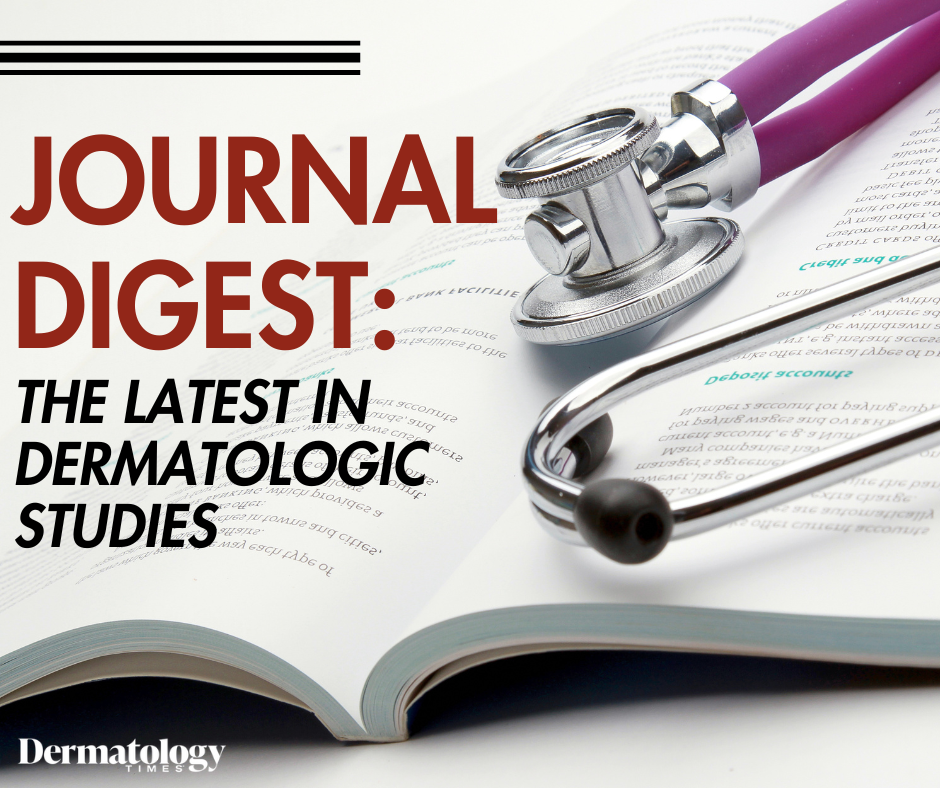- Acne
- Actinic Keratosis
- Aesthetics
- Alopecia
- Atopic Dermatitis
- Buy-and-Bill
- COVID-19
- Case-Based Roundtable
- Chronic Hand Eczema
- Drug Watch
- Eczema
- General Dermatology
- Hidradenitis Suppurativa
- Melasma
- NP and PA
- Pediatric Dermatology
- Pigmentary Disorders
- Practice Management
- Precision Medicine and Biologics
- Prurigo Nodularis
- Psoriasis
- Psoriatic Arthritis
- Rare Disease
- Rosacea
- Skin Cancer
- Vitiligo
- Wound Care
News
Article
Journal Digest: January 15
Author(s):
This week’s collection of the latest dermatologic studies covers the association between smoking and male pattern hair loss, immunohistochemical expression of angiotensin-converting enzyme-2 in the skin of patients with COVID-19, stiff skin syndrome, and pityriasis rosea and pityriasis rosea-like eruption following COVID-19 vaccination.

Journal of Cosmetic Dermatology: A Meta-analysis Study on the Association Between Smoking and Male Pattern Hair Loss
Gupta et al’s meta-analysis explores the link between smoking and androgenetic alopecia (AGA) in men. Data from 8 identified studies were used across 4 meta-analyses. Ever-smokers exhibit a significantly higher likelihood of developing AGA compared to never-smokers, with a pooled odds ratio of 1.82. Additionally, men smoking at least 10 cigarettes per day face increased odds of AGA development (pooled OR = 1.96). For those with AGA, progression odds are significantly higher in ever smokers (pooled OR = 1.27). According to the author, their findings emphasize the impact of smoking on AGA and provide insights for future research and clinical guidelines.
The American Journal of Dermatopathology: Immunohistochemical Expression of Angiotensin-Converting Enzyme 2 in the Skin of Patients Affected by COVID-19
Abdou et al’s study investigates the immunohistochemical expression of angiotensin-converting enzyme-2 (ACE2) in the skin of patients with COVID-19 with and without cutaneous manifestations. Skin biopsies from 25 patients with cutaneous manifestations and 22 without were analyzed. Positive ACE2 expression was significantly higher in patients without cutaneous manifestations (96%) compared to those with (72.7%). ACE2 expression in the skin correlated with comorbidities, family history, ABCD score, lactate dehydrogenase, D-dimer, respiratory rate, and oxygen saturation. The skin's involvement in COVID-19, particularly in cases without cutaneous manifestations, suggests a potential link to disease severity, emphasizing ACE2 as an indicator of worsened status, according to the authors.
European Journal of Dermatology: Stiff Skin Syndrome: A Clinicopathological Study of 31 Cases
Wen et al’s study presents a comprehensive analysis of stiff skin syndrome (SSS), a rare disorder characterized by skin sclerosis. Examining 31 cases, including 3 widespread and 28 segmental SSS, the author’s findings reveal distinct clinical and histopathological features. Widespread SSS manifests as concentrated skin sclerosis over specific body regions, affecting gait and posture. Segmental SSS displays sclerotic plaques with associated features like hypertrichosis and hyperpigmentation, causing less physical discomfort. Regarding histopathology, SSS exhibits fibroblast proliferation, and collagen sclerosis, and lacks lymphocyte infiltration, distinguishing it from morphea.
Clinical, Cosmetic, and Investigational Dermatology: Pityriasis Rosea and Pityriasis Rosea-Like Eruption Following COVID-19 Vaccination: A Narrative Review
Potestio et al’s systematic review investigates cases of pityriasis rosea (PR) and PR-like eruptions following COVID-19 vaccination. Analyzing 113 cases from 29 manuscripts, the majority associated with the BNT162b2 vaccine, the study explores the temporal correlation and potential pathogenetic mechanisms. The median time from vaccine to PR onset was 9 ± 6.3 days, with most cases following the first dose. No severe diseases or PR were reported following the third dose. Although the number of cases is low compared to vaccinations administered, clinicians are advised to consider the possibility of PR following COVID-19 vaccination, emphasizing the need for further studies to identify at-risk patients and preventive measures. The authors also note that COVID-19 vaccinations should not be discouraged.
What new studies have you published? Share with us by emailing DTEditor@mmhgroup.com.










